In the freshwater streams and rivers of South America lies a breathtaking sight – the Pygmy Corydora (Corydoras pygmaeus), a true marvel of nature. Despite its tiny size of just one inch, this magnificent creature gracefully navigates its way through the vibrant plants and sturdy rocks. Don’t let its small stature fool you, for the Pygmy Corydora possesses an incredible personality and an irresistible charm that captivates all who encounter it.
Table of Contents
This tiny catfish belongs to the Callichthyidae family and is closely related to other popular aquarium species like the Bronze Corydora and the Panda Corydora. Despite its diminutive stature, the Pygmy Corydora has captured the hearts of aquarists worldwide since its discovery in the early 1900s.
What makes this little fish so interesting? For starters, its size allows it to thrive in smaller aquariums, making it an ideal choice for nano tank enthusiasts. But don’t let its petite proportions fool you—the Pygmy Corydora is a lively and social creature that prefers the company of its own kind. In the wild, they can be found in schools of hundreds, darting among the vegetation and foraging for food along the riverbed.
As a bottom-dwelling species, the Pygmy Corydora is a master of camouflage. Its mottled brown and grey coloration helps it blend seamlessly with the substrate, while its barbels (whisker-like sensory organs) allow it to detect tasty morsels hidden in the sand. Their diet consists primarily of small invertebrates, insect larvae, and algae, making them an excellent addition to any clean-up crew.
In the aquarium trade, the Pygmy Corydora is sometimes referred to as the “Pygmy Cory” or simply “Pygmy.” These endearing names reflect not only their size but also their gentle and peaceful nature. Unlike some larger catfish species, Pygmy Corydoras are not known to be aggressive or territorial, making them suitable tank mates for a wide variety of small, non-aggressive fish.
When it comes to care, the Pygmy Corydora is relatively undemanding. They thrive in well-planted aquariums with plenty of hiding spots and a soft, sandy substrate. A group of at least six individuals is recommended to ensure their social needs are met, and a temperature range of 72-79°F (22-26°C) is ideal for their health and well-being.
Fun fact: Did you know that the Pygmy Corydora is a master of disguise? When threatened, they can play dead by lying motionless on their side, fooling potential predators into thinking they’re no longer a viable meal. This clever survival tactic has helped them thrive in their native habitats for millions of years.
So, if you’re looking for a small but spunky addition to your freshwater aquarium, consider the Pygmy Corydora. With their endearing personalities, fascinating behaviors, and easy care requirements, these tiny catfish are sure to swim their way into your heart.
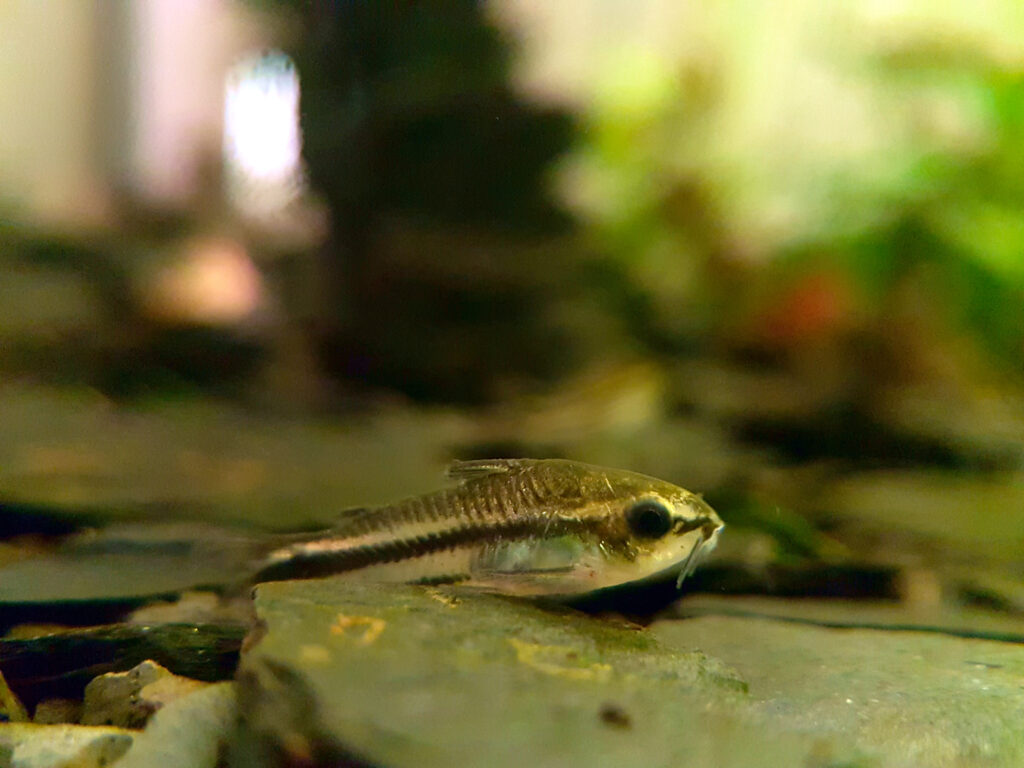
Pygmy Corydora Key Information
The Pygmy Corydora (Corydoras pygmaeus) is a charming little catfish that adds a splash of color and life to any freshwater aquarium. With its mottled brown and grey body, accented by a striking black stripe that runs from its eye to its tail, this miniature marvel is as visually appealing as it is fascinating to observe. The Pygmy Corydora’s translucent fins are tinged with a hint of yellow or orange, adding a subtle but captivating contrast to its overall appearance.
| Family | Callichthyidae |
| Origin | South America (Brazil, Colombia, Peru) |
| Price | $2 to $5 per fish |
| Common Names | Pygmy Cory, Pygmy Catfish |
| Variants | None known |
| Ideal Tank Size | 10 gallons or larger |
| Water Parameters | Temperature: 72-79°F (22-26°C), pH: 6.0-7.5, Hardness: 2-15 dGH |
| Lifespan | 3 to 5 years |
| Full Size | 1 inch (2.5 cm) |
| Natural Environment | Freshwater streams and rivers |
| Behavior | Peaceful, social, bottom-dwelling |
| Habitat Preference | Well-planted aquariums with soft, sandy substrate |
| Aquarium Decoration | Plenty of hiding spots, driftwood, live plants |
| Ideal Tank Mates | Small, peaceful fish (tetras, rasboras, other small corydoras) |
| Fish to Avoid | Large, aggressive fish that may view them as prey |
| Best Foods/Diet | Sinking pellets, frozen or live foods (brine shrimp, daphnia, bloodworms) |
| Disease | Susceptible to common fish diseases if water quality is poor |
| Sex-Switch | No |
| Gender Differences | Difficult to distinguish, females may be slightly larger |
| Care Level | Easy |
| Breeding Level | Moderate |
Ideal Tank Mates for Pygmy Corydora
When it comes to finding the perfect tank mates for your Pygmy Corydoras, it’s essential to consider compatibility in terms of temperament, size, and environmental requirements. Pygmy Corydoras are peaceful, social, and thrive in the company of their own species or other small, non-aggressive fish. Here are 10 ideal tank mates that will create a harmonious and visually appealing aquarium environment for your Pygmy Corydoras.
1. Neon Tetras (Paracheirodon innesi)
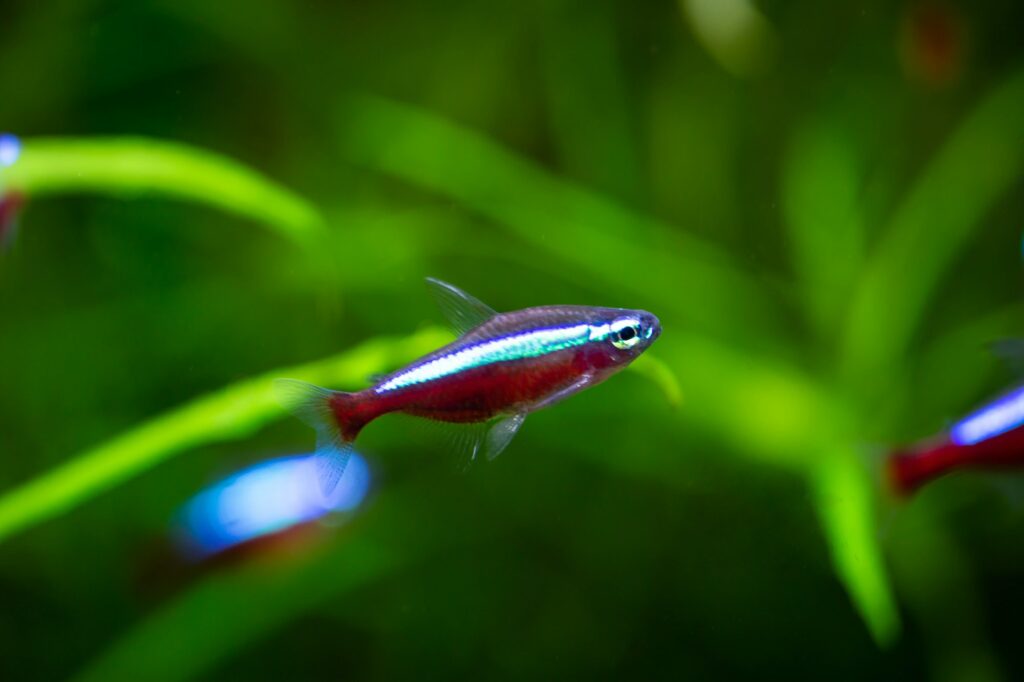
Neon Tetras are a classic choice for Pygmy Corydora tank mates. These small, colorful fish share similar water parameters and are known for their peaceful nature. The vibrant blue and red stripes of Neon Tetras add a pop of color to the aquarium, while their active swimming behavior creates a dynamic display that complements the bottom-dwelling Pygmy Corydoras.
| Common/Market Names | Neon Tetra |
| Price Range | $1 to $3 per fish |
| Care Level | Easy |
| Behavior | Peaceful, schooling |
| Life Span | 5 to 8 years |
| Max Size | 1.5 inches (3.8 cm) |
2. Harlequin Rasboras (Trigonostigma heteromorpha)

Harlequin Rasboras are another excellent choice for Pygmy Corydora tank mates. These small, triangular-shaped fish are known for their striking red and black coloration and their tight schooling behavior. Harlequin Rasboras prefer similar water conditions to Pygmy Corydoras and are peaceful, making them an ideal addition to a community tank.
| Common/Market Names | Harlequin Rasbora, Red Rasbora |
| Price Range | $2 to $4 per fish |
| Care Level | Easy |
| Behavior | Peaceful, schooling |
| Life Span | 5 to 8 years |
| Max Size | 2 inches (5 cm) |
3. Cherry Barbs (Puntius titteya)
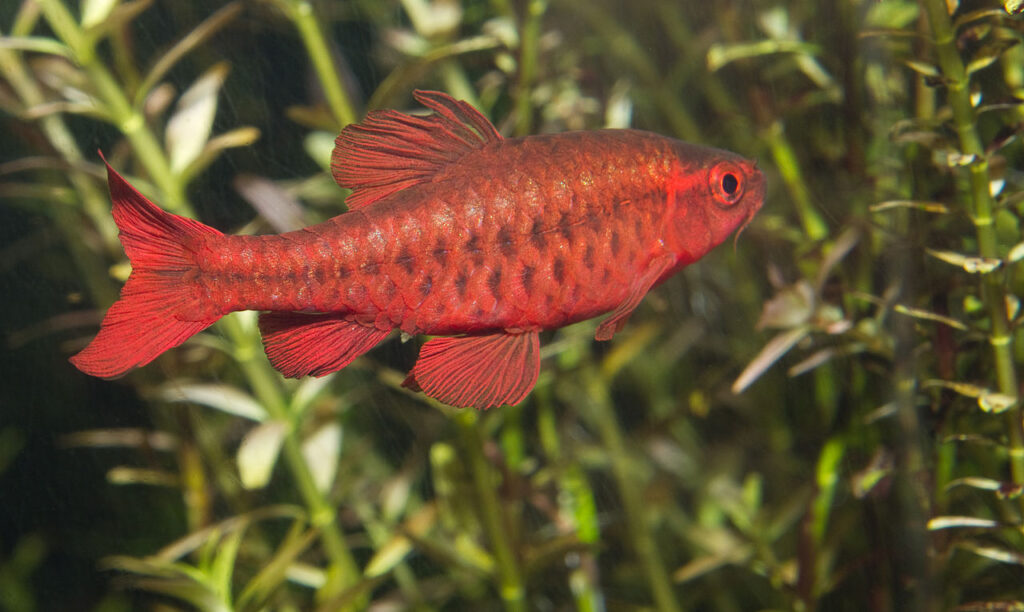
Cherry Barbs are a colorful and lively addition to a Pygmy Corydora tank. Males display a vibrant red coloration, while females have a more subdued reddish-brown hue. These active swimmers prefer the middle and upper levels of the aquarium, providing a nice contrast to the bottom-dwelling Pygmy Corydoras. Cherry Barbs are peaceful and thrive in planted aquariums with plenty of hiding spots.
| Common/Market Names | Cherry Barb, Sun Barb |
| Price Range | $2 to $5 per fish |
| Care Level | Easy |
| Behavior | Peaceful, active |
| Life Span | 4 to 7 years |
| Max Size | 2 inches (5 cm) |
4. Ember Tetras (Hyphessobrycon amandae)
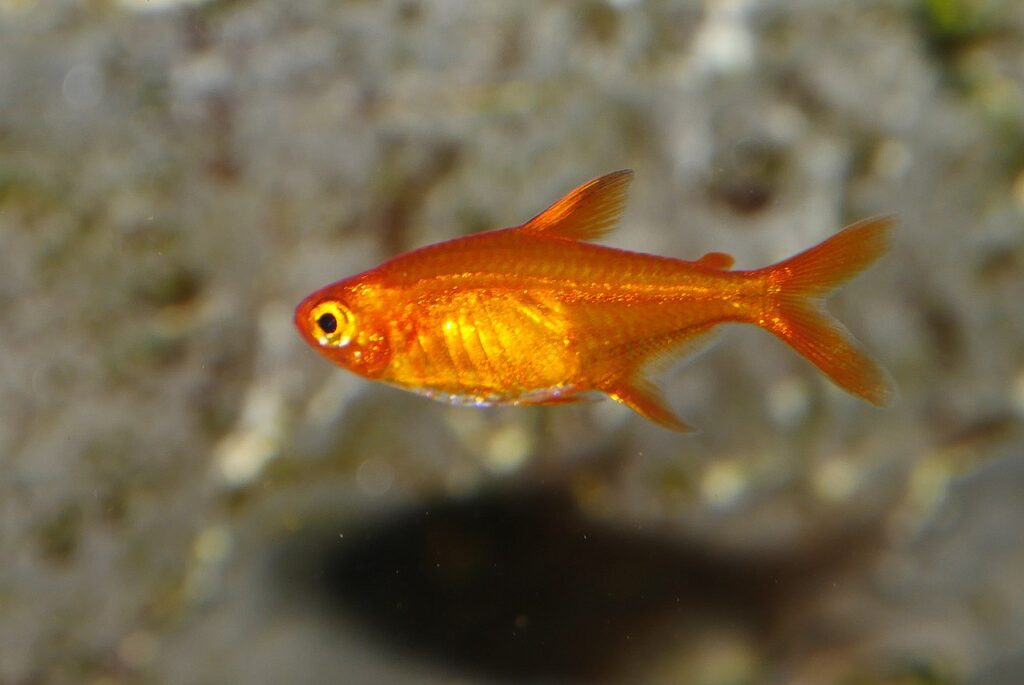
Ember Tetras are a small, peaceful species that make excellent tank mates for Pygmy Corydoras. These tiny fish have a striking orange-red coloration that adds a warm, fiery glow to the aquarium. Ember Tetras prefer the company of their own kind and should be kept in schools of at least six individuals. They are active swimmers and will explore all levels of the aquarium.
| Common/Market Names | Ember Tetra, Amanda’s Tetra |
| Price Range | $2 to $4 per fish |
| Care Level | Easy |
| Behavior | Peaceful, schooling |
| Life Span | 2 to 4 years |
| Max Size | 0.8 inches (2 cm) |
5. Endler’s Livebearers (Poecilia wingei)
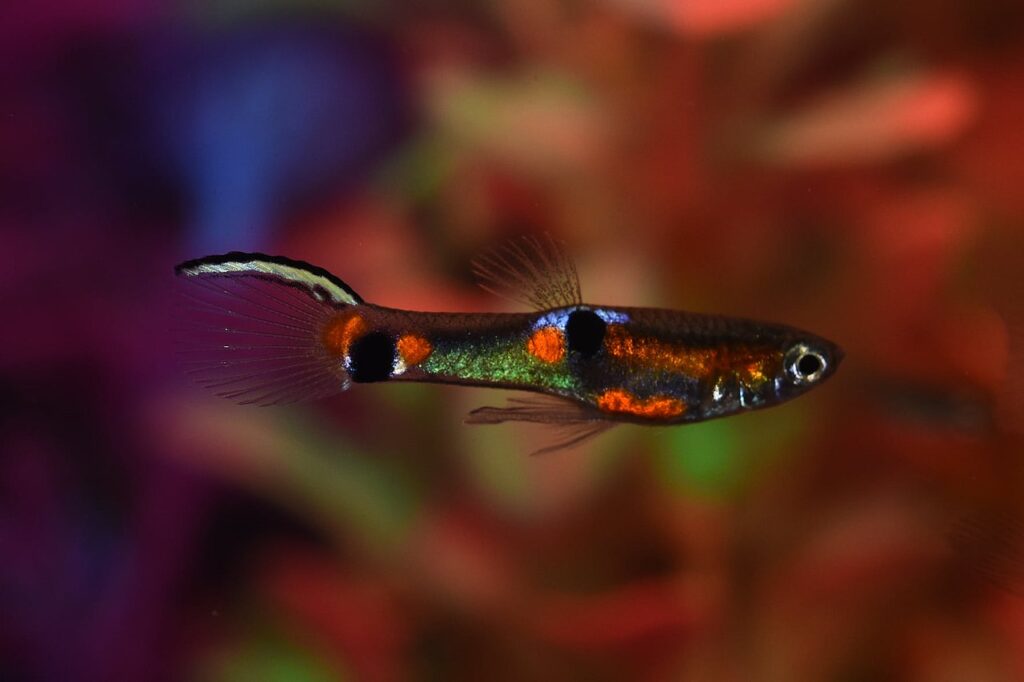
Endler’s Livebearers are a colorful and hardy species that make fantastic tank mates for Pygmy Corydoras. These small fish come in a variety of colors and patterns, with males being more vibrant than females. Endler’s Livebearers are active swimmers and will explore all levels of the aquarium. They are peaceful and adapt well to a wide range of water conditions.
| Common/Market Names | Endler’s Livebearer, Endler’s Guppy |
| Price Range | $3 to $8 per fish |
| Care Level | Easy |
| Behavior | Peaceful, active |
| Life Span | 2 to 3 years |
| Max Size | 1.5 inches (3.8 cm) |
6. Celestial Pearl Danios (Danio margaritatus)
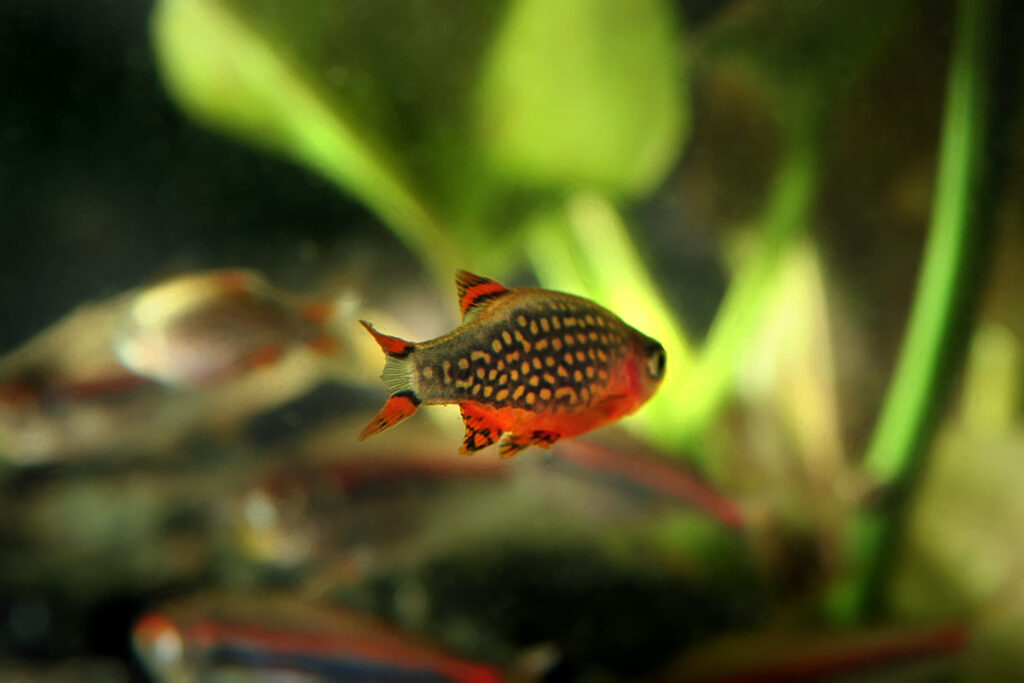
Celestial Pearl Danios, also known as Galaxy Rasboras, are a stunning and peaceful species that make excellent tank mates for Pygmy Corydoras. These small fish have a pearlescent body with a galaxy-like pattern of dark spots, making them a visually captivating addition to any aquarium. Celestial Pearl Danios prefer the middle and upper levels of the tank and should be kept in schools of at least six individuals.
| Common/Market Names | Celestial Pearl Danio, Galaxy Rasbora |
| Price Range | $4 to $8 per fish |
| Care Level | Moderate |
| Behavior | Peaceful, schooling |
| Life Span | 3 to 5 years |
| Max Size | 1 inch (2.5 cm) |
7. Pygmy Hatchetfish (Carnegiella myersi)
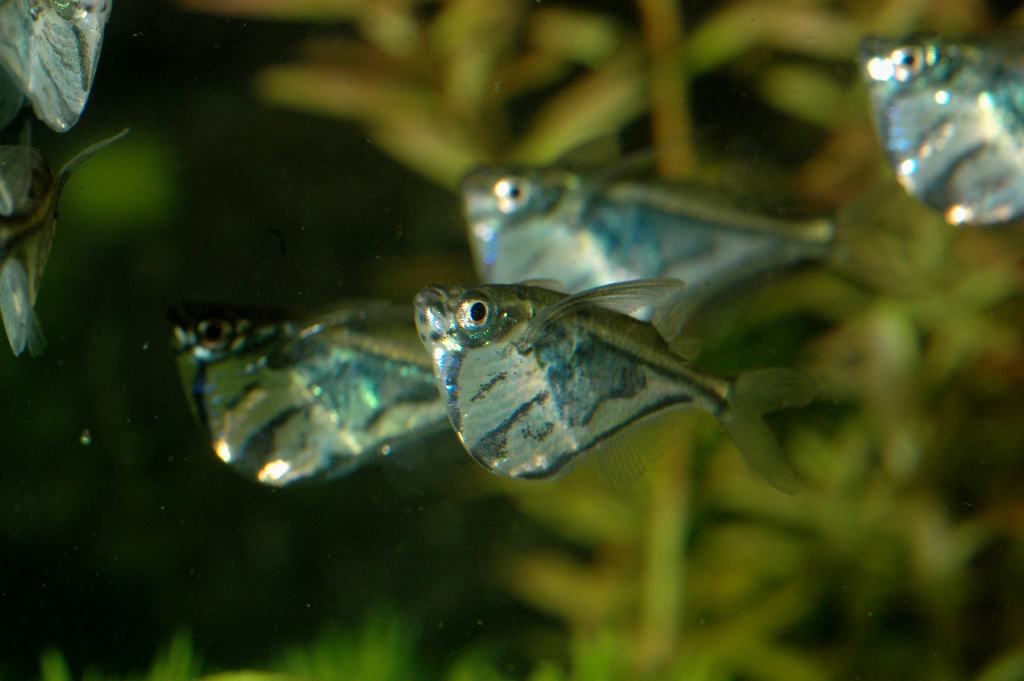
Pygmy Hatchetfish are a unique and interesting choice for Pygmy Corydora tank mates. These small, silver-bodied fish have an unusual shape, with a flattened ventral surface that allows them to dart along the water’s surface. Pygmy Hatchetfish are peaceful and prefer the company of their own species, making them a fascinating addition to the upper levels of the aquarium.
| Common/Market Names | Pygmy Hatchetfish, Myer’s Hatchetfish |
| Price Range | $4 to $8 per fish |
| Care Level | Moderate |
| Behavior | Peaceful, surface-dwelling |
| Life Span | 2 to 4 years |
| Max Size | 1 inch (2.5 cm) |
8. Chili Rasboras (Boraras brigittae)
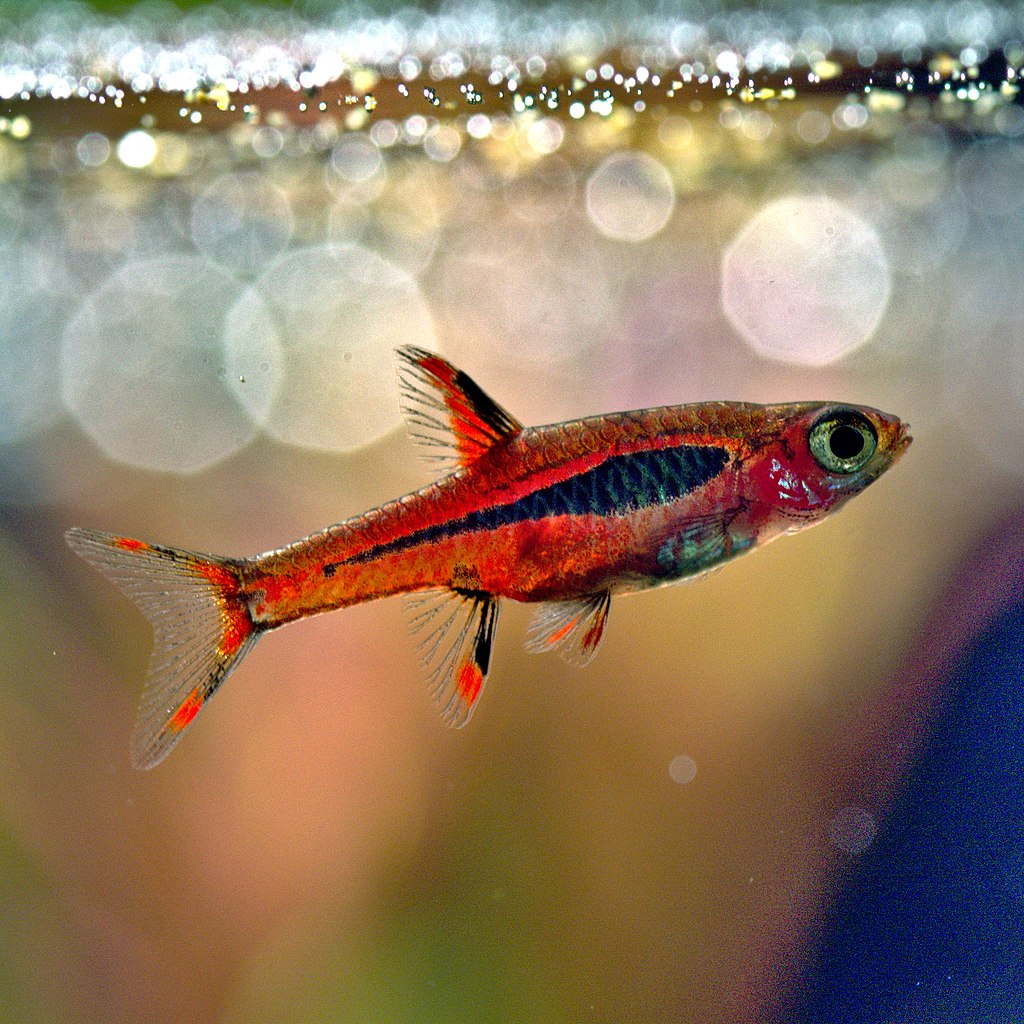
Chili Rasboras are a tiny, vibrant species that make excellent tank mates for Pygmy Corydoras. These fish have a striking red coloration that adds a splash of color to the aquarium. Chili Rasboras are peaceful and should be kept in schools of at least eight individuals. They prefer the middle and upper levels of the tank and thrive in heavily planted aquariums.
| Common/Market Names | Chili Rasbora, Mosquito Rasbora |
| Price Range | $2 to $4 per fish |
| Care Level | Moderate |
| Behavior | Peaceful, schooling |
| Life Span | 2 to 4 years |
| Max Size | 0.7 inches (1.8 cm) |
9. Dwarf Pencilfish (Nannostomus marginatus)
Dwarf Pencilfish are a peaceful and attractive species that make wonderful tank mates for Pygmy Corydoras. These slender fish have a golden-brown body with dark vertical stripes, reminiscent of a pencil. Dwarf Pencilfish are active swimmers and will explore all levels of the aquarium. They prefer the company of their own kind and should be kept in schools of at least six individuals.
| Common/Market Names | Dwarf Pencilfish, Diptail Pencilfish |
| Price Range | $3 to $6 per fish |
| Care Level | Easy |
| Behavior | Peaceful, schooling |
| Life Span | 3 to 5 years |
| Max Size | 1.5 inches (3.8 cm) |
10. Pygmy Gouramis (Trichopsis pumila)
Pygmy Gouramis are a small, peaceful species that make excellent tank mates for Pygmy Corydoras. These fish have a unique appearance, with a elongated body and a pair of threadlike pelvic fins. Pygmy Gouramis are known for their subtle but captivating coloration, which can range from pale green to reddish-brown. They prefer the middle and upper levels of the aquarium and are best kept in pairs or small groups.
| Common/Market Names | Pygmy Gourami, Sparkling Gourami |
| Price Range | $4 to $8 per fish |
| Care Level | Moderate |
| Behavior | Peaceful, territorial |
| Life Span | 3 to 5 years |
| Max Size | 1.5 inches (3.8 cm) |
FAQs About Pygmy Corydora
How many Pygmy Corydoras should I keep in my aquarium?
Pygmy Corydoras are schooling fish and should be kept in groups of at least six individuals. Keeping them in larger groups will help them feel more secure and display their natural behaviors.
Can Pygmy Corydoras be kept with shrimp?
Yes, Pygmy Corydoras are generally safe to keep with shrimp, such as Cherry Shrimp or Amano Shrimp. These peaceful catfish will not harm the shrimp and can even help keep the aquarium clean by scavenging for leftover food.
Are Pygmy Corydoras sensitive to water changes?
Pygmy Corydoras can be sensitive to sudden changes in water parameters. When performing water changes, be sure to use a water conditioner to remove chlorine and chloramines, and try to match the temperature and pH of the new water to the existing aquarium water to minimize stress on your fish.
How often should I feed my Pygmy Corydoras?
Pygmy Corydoras should be fed small amounts of food two to three times a day. Offer a variety of sinking foods, such as pellets, wafers, and frozen or live foods like brine shrimp and bloodworms. Be careful not to overfeed, as excess food can lead to water quality issues.
Can Pygmy Corydoras be kept in a planted aquarium?
Yes, Pygmy Corydoras are an excellent choice for planted aquariums. These small catfish will not disturb or uproot plants, and they will appreciate the hiding spots and natural feel that a well-planted aquarium provides.
Do Pygmy Corydoras need a heater in their aquarium?
Pygmy Corydoras prefer water temperatures between 72-79°F (22-26°C). If the ambient room temperature is consistently within this range, a heater may not be necessary. However, if the room temperature fluctuates or falls below this range, a heater will be required to maintain stable water temperatures.
How can I tell if my Pygmy Corydoras are healthy?
Healthy Pygmy Corydoras should have clear eyes, a rounded belly, and no visible signs of disease or injury. They should be active and responsive, swimming and foraging in their tank. If you notice any signs of illness, such as lethargy, loss of appetite, or white spots on their body, consult a veterinarian or experienced aquarist for advice.
Can Pygmy Corydoras be kept in a community tank with larger fish?
Pygmy Corydoras are best kept with other small, peaceful fish that will not view them as potential prey. While they can be kept in a community tank with larger fish, it’s essential to choose tank mates carefully. Avoid housing them with large, aggressive species that may bully or attempt to eat the Pygmy Corydoras.
How long do Pygmy Corydoras typically live?
With proper care and a well-maintained aquarium, Pygmy Corydoras can live for 3 to 5 years. Factors such as water quality, diet, and tank mate compatibility can all influence their lifespan.
Are Pygmy Corydoras difficult to breed?
Breeding Pygmy Corydoras can be challenging but not impossible for experienced aquarists. These fish require specific water parameters and spawning triggers, such as a slight drop in temperature and the presence of fine-leaved plants for egg-laying. If successful, the fry (baby fish) will require specialized care and feeding until they are large enough to be introduced to the main aquarium.